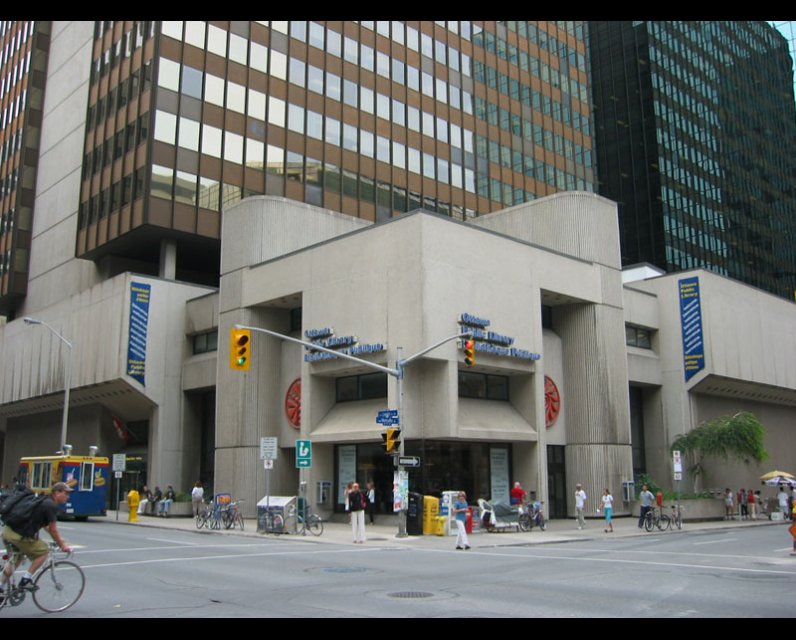Unpublished Opinions
A former federal civil servant (Foreign Affairs) and consultant, Terrence Lonergan lives in Ottawa and is active in local and community affairs.
A Modern Library for Ottawa (Part 1)

PART 1. The Modern Library is also a Community Centre
On March 31, the Ottawa Public Library (OPL) will hold initial discussions on a new Central Branch in Ottawa. Residents have been invited to participate to an information session or an online forum and provide input into the spaces and services of the future building.
Where should new this Central Branch be located, what should it look like and, by the way, what should a public library be doing today?
These questions are far from trivial. Planning for a major library in 2015 can’t possibly be straightforward, not with everybody reading from screens as much as in books, not when to search has become to ‘google’.
A quick survey of recently opened or planned central libraries in metropolitan centres (Seattle 2004, Winnipeg 2005, Helsinki 2012, San Diego 2013, Halifax 2014, Calgary 2016, Edmonton 2018) points to a near consensus in favour of an accessible, voluminous, airy, well-lit, and multi-function built-form.[i] It appears that architects and cities get the building, and agree that, from the street, it should look monumental.
When it comes to function and organization, however, there is a lot more doubt than certainty.
With good reason: as everyone has witnessed, a book no longer means hard cover or paperback. Increasingly, it ceases to be a physical object. And now that computers, tablets and smart phones are ubiquitous, browsing is metamorphosing into surfing, typing into thumbing, writing into emailing or texting, and reading into scanning. In libraries, information technologies have changed the definition and mechanics of shelving, storing, retrieving, and long-term preservation of information. Wireless scanners even read the RFIDs glued to the borrowed books, CDs and DVDs you carry in your backpack to ensure they were properly checked out.
Between today and 1974, when the present Central Branch was inaugurated, the chasm is huge. No matter where it is located, no matter its architectural style, Ottawa’s new Central Library will not function as its predecessor or indeed as old libraries once did.
To be of real and effective use, Ottawa’s new Central Library, a building whose life expectancy should extend to 50 years, will have to reflect 21st Century values and lifestyles, incorporate a full array of new technologies, and have a built-in capacity to adapt to our unfolding information age.
So yes, libraries once were cool places because books were stored and could be borrowed there. However, as we are already finding out, attractive, weighty hardcopy books are unlikely to define tomorrow’s libraries. And such books will certainly not justify their continued existence.
Which raises the question: is there any need for a new Central Library in Ottawa?
I think this is one debate we cannot avoid. And I believe that building another monumental tribute to hard copy books would be a dreadful mistake.
That being said, however, I am convinced that libraries will continue to exist, far into the future. But they will be a different place. In essence, they will be places where to read, reflect, and acquire knowledge, where the love for storytelling fulfils a need for information. But that information will have been digitized rather than printed.
Let me explain what I mean by outlining the four paradoxes, which, I believe, define the information age library.
Paradox 1. As libraries lose their historical raison d’être (store and display books), they metamorphose into Culture and Community Centres and acquire additional functions.
Paradox 2. In the future, libraries will store and display fewer books on their shelves that fewer people will borrow. Nevertheless their books business will grow, become more complex, and probably require more space.
Paradox 3. As the book-object disappears, its contents are freed, poised for a new and larger life.
Paradox 4. Though people will less and less learn from books, libraries will be more closely connected to the acquisition of knowledge.
………………………….
In this initial paper, I will deal only with the first of these four paradoxes
Paradox 1: As libraries lose their historical raison d’être (store and display books), they metamorphose into Culture and Community Centres and acquire additional functions.
This trend is already well established. The smallish OPL branch in my neighbourhood, Emerald Plaza, offers a full panoply of community services: Family Storytime, Groupe de conversation en français, Elder Abuse Information Session, Cratfternoon, 50+ Computer Club, Poetry Café, Knit2Gether, Toddlertime, Book Chat, and so forth, 46 activities altogether. A good half of these activities pertain to books or the enjoyment of reading. The rest qualify as community activities.
One might see this as a dilution of the Library’s original mandate, but actually it is not.
People have gathered in libraries since 1857, when the British Museum organized a reading room to meet the needs of scholars.[ii] Soon thereafter, libraries lost their elite status. More and more popularized, they evolved into general stores of knowledge, places of collective memory, where national identity, a common culture, and general knowledge could be nurtured over years through contact with books, visits to exhibitions, attendance to conferences or talks, and participation in discussion groups and community activities.
For more than a century, libraries have thus offered a gateway to permanent education, where gains are achieved at the user’s chosen pace. It’s a model equally attractive to the dilettante and the keen researcher.
Emerald Plaza, and most other branches, throw open their doors because people are crowding in front of them. Gregariousness is written in the human genome. People naturally seek places of assembly, for common purpose or just to people watch. A bus shelter, a street bench or an outdoor café table will provide a perch from where to enjoy the theater of human life. Idleness may be praised to the sky, but in reality when it comes to filling hours of leisure, having fun, or adding meaning to life, people generally prefer to interact with family and friends, or chat, play, work with a neighbour or acquaintance. On top of that, most people are willing to volunteer time and effort for a cause they find worthwhile.
These types of peaceful, productive, and enjoyed, gregariousness generate considerable benefits for the community, from the supply of cost-free social service, an improved atmosphere of order and civility in town or on the street, and stronger social cohesion. Government at all levels, from city to nation, appreciate a self-organized, self-propelled society because it promotes democracy, keeps the peace and reduces the demand for health, welfare and police services.
However, in an advanced country, free-market economy, or secular society, where the nuclear family and individualism are the norm, readily available places of assembly are not easy to come by.
Of course, the private sector sees the opportunity people spontaneously create when they congregate but it is hamstrung by its profit motive. Typically, the marketplace responds to crowds with pay-for-entertainment in malls, theaters, stores, and cafés. In each of these places, the clock ticks on and customers must spend money to justify their continued presence.
Many churches have spawned community centres, auditoriums, art galleries, and playhouses. Some have metamorphosed into them. They serve a wide and varied public but are not as distinctively non-denominational as libraries. In a modern secular society like Canada where bilingualism, multiculturalism and multi-ethnicity are a daily encounter, the neutrality of libraries makes them more attractive to crowds than most institutions.
For a city like Ottawa, is this a good or a bad thing? Doesn’t it force the city to plan for branches with more floor space than the storage of books and reading rooms really warrant?
Let’s consider the opportunity cost. Municipalities manage far more than just libraries. They operate such facilities as schools, arenas, skating rinks, tennis courts, swimming pools, parks, playgrounds, auditoriums, community centres, and they facilitate extra-curricular activities at school. A quick calculation will reveal that few of these other facilities touch more people of all ages and cost less per person than libraries.
Let’s now consider the potential benefits of generating crowds.
Institutions that can create crowds gain access to their latent talent, acquire the power to release their potential energy. In the 21th century, masses of people possess a high level of formal education, certified professional expertise, and valuable life experience. The trick is to find a way to tap into the crowd’s pool of resources. It’s been done before, as Wikipedia demonstrates. Blend together a virtual platform (an open space), an appealing objective, a good work plan with a reasonable schedule, and volunteers emerge from the crowd.
Here lies, for libraries, a unique opportunity. A suite of large, comfortable but functional rooms, a quiet and studious atmosphere: these are precious assets, propitious to setting a crowd into motion. It would be hard to find a better, practically cost-free, launch pad for getting done things of interest and value to the community.
………………
Over the next few days, I will examine each of the three remaining paradoxes.
Terrence Lonergan
Ottawa
.......................................
Endnotes:
[i] For a quick survey of 20 modern libraries from around the world, see: http://ebookfriendly.com/modern-libraries/ (Website accessed 10 March 2015). The artistic talent of contemporary architects is in full display.
[ii] For a history of the British Museum and its Library, please consult: http://www.britishmuseum.org/about_us/the_museums_story/general_history.aspx
--------------------------
A Modern Library for Ottawa:



Comments
Be the first to comment